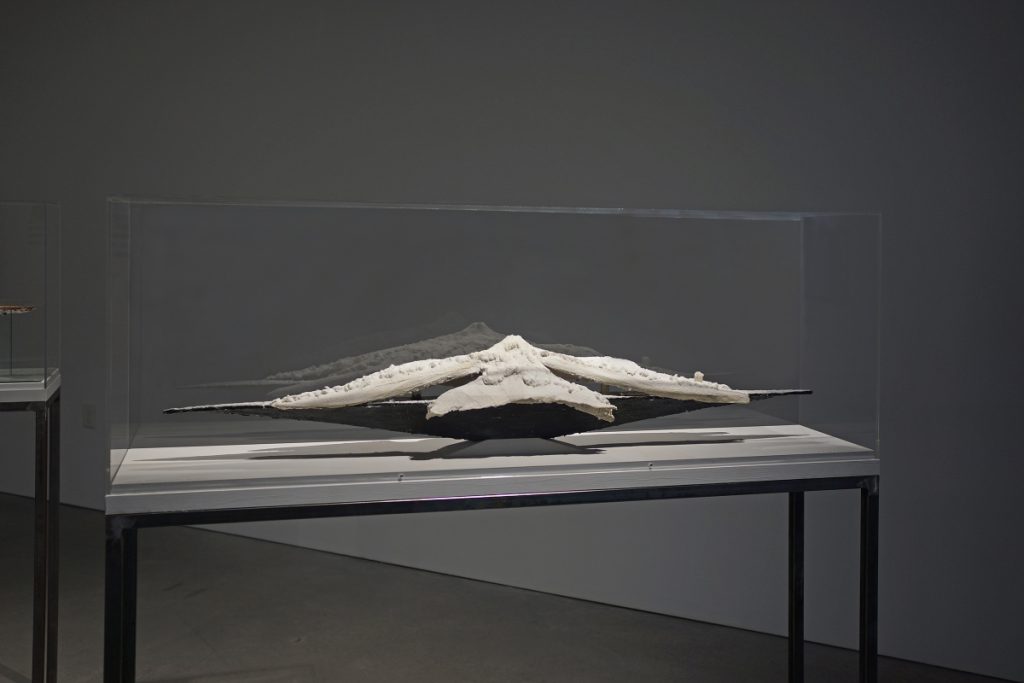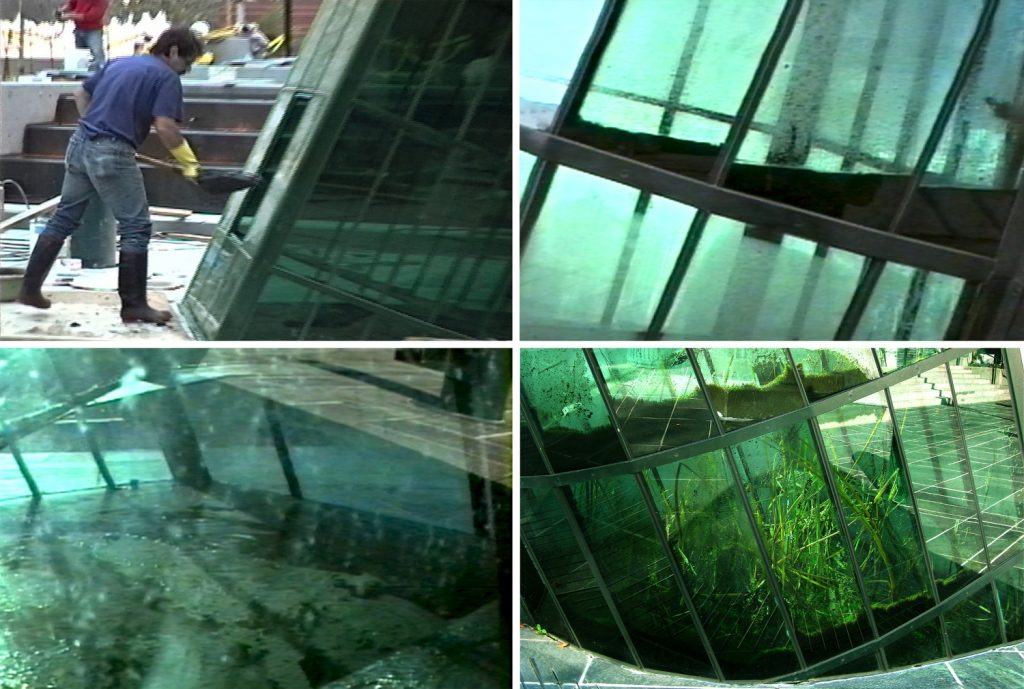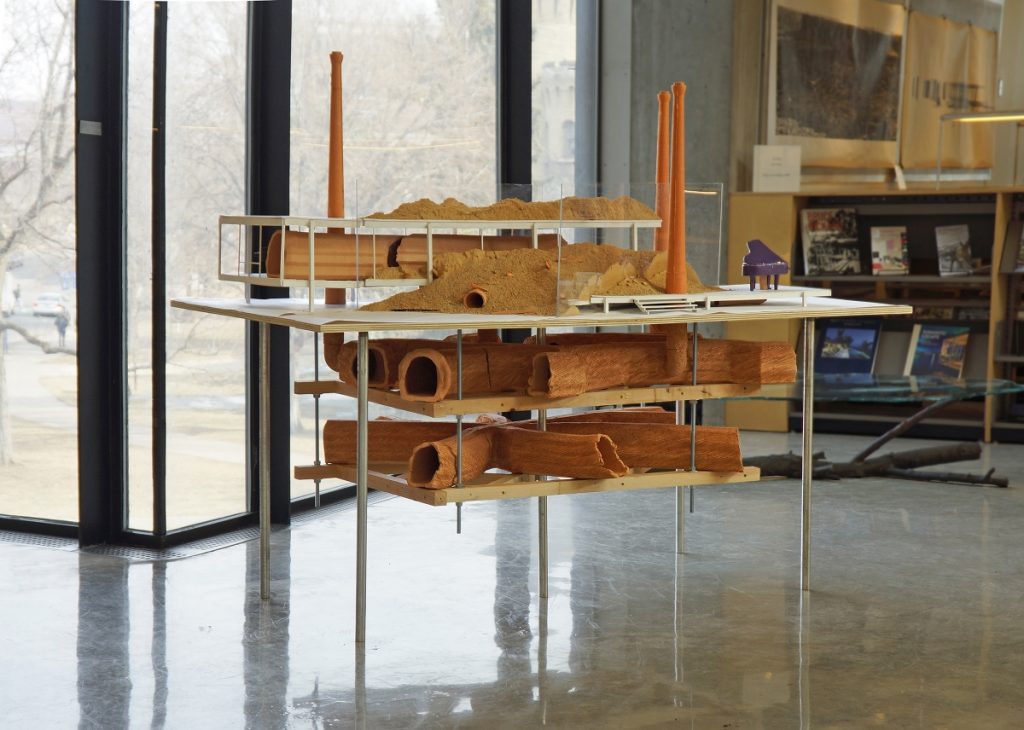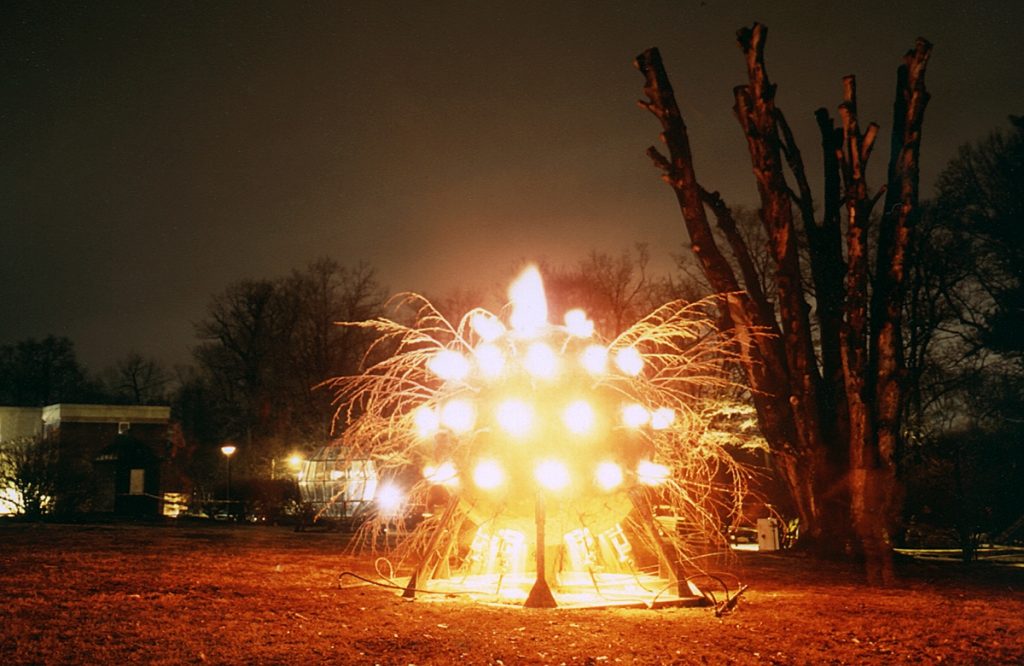John Roloff is a visual artist who works conceptually with site, process and natural systems. He is known for his ceramic works and outdoor kiln/furnace projects done from the 1970’s into the 1990’s, as well as other large-scale environmental projects, gallery installations and objects investigating geologic and natural phenomena. Based on an extensive background and ongoing research in the earth sciences, he works from geochemical and global metabolic perspectives. His work engages poetic and site-specific relationships between material, concept and performance in the domains of geology, ecology, architecture, ceramics, industry, metabolic systems and history. The ship is a central image of his work, metaphorically evoking psychological and transformative processes of the sea and land in geologic and contemporary time. He studied geology at UC Davis, Davis, CA with Professor Eldridge Moores and others during the formative days of plate tectonics in the late-1960’s. Contemporaneous with geology he studied art with Bob Arneson and William T. Wiley also at UC Davis. Working with Louis Marak, he received a master’s degree in art in 1973 from CSU Humboldt.
In addition to numerous environmental, site-specific installations in the US, Canada and Europe, his work has been included in exhibitions at the Whitney Museum of American Art, UC Berkeley Museum, San Francisco Museum of Modern Art, Smithsonian Institution, Photoscene Cologne and the Venice Architectural and Art Biennales, The Snow Show in Kemi, Finland and Artlantic: wonder, Atlantic City, NJ. Art works in the public realm that explore geologic and related concepts can be found at sites such as: Yerba Buena Gardens, San Francisco, CA, University of Minnesota, Minneapolis, MN, I-5 Colonnade Park, Seattle, WA and Stanford University, Palo Alto, CA. He has received 3 artist’s visual arts fellowships from the NEA, a Guggenheim Foundation fellowship, a California Arts Council grant for visual artists and a Bernard Osher Fellowship at the Exploratorium, San Francisco, CA. He is represented by Anglim/Trimble Gallery in San Francisco and is Professor Emeritus of Sculpture/Ceramics at the San Francisco Art Institute.
Visit John Roloff’s website and Instagram page.
Featured work
Selected Ships, 1972-2019

Sentient Terrains, 1993-2021

Two Sites with a Similar Problem, 2019

Land Kilns, 1979-1992

“…the kiln’s operation and results are only partially predictable and are allowed “a mind of their own.” When successful, a firing would approach an irrational point, the verge of losing control, and a metaphor is suggested of the unconscious in a primitive or vulnerable state where time becomes emotion, chemistry spirit and matter theater.”
J. Roloff, Kiln Projects, Artery Magazine, February/March, 1983.
Ceramics as a function of landscape and process in a systemic and expanded frame has been at the core of my artistic practice for some 50 years. Originating from my studies as a geology/art major at UC Davis in the late 1960’s, the materials of sculpture and ceramics are perceived from the viewpoint of natural origin, process and scale. Dolomite, kaolin, feldspar, and other materials in powder form housed in the glaze room were derived from rock formations I studied as terrestrial/oceanic geologic structures, process and time. Aesthetically, this perception of landscape was informed by the work of 19th century landscape artists such as: J. M. W. Turner, F. Church and J. Kensett, the writings of G. Snyder, J. L. Borges and G. Grass, as well as work by earth scientists, E. Moores, H. Hess, H. W. Menard, M. Tharp, among many others. In addition to numerous, concurrent object/tableau works, this sense of materiality, process and scale was the foundation for a series of research-driven, site investigations manifest in the Land Kilns, 1979-1992, and more broadly as ‘expanded ceramics.’ The Land Kilns, in particular, the later three works of 51 Million BTU’s, 1988-89, and another fired work, Metabolism and Morality/O2, 1992, deepened already evolving concepts of site-alchemical material/historical transformations as a symbiotic merging of physical matter and living systems across geologic time within a system of global metabolism. This assemblage embraced an integration of ecology, ontology, self-organizing systems, energy flow and aesthetics. An enlarged definition of ceramics as a protagonist to engage metabolic relationships and narratives transcending the “living/non-living” dichotomy in a terrestrial/cinematic context. The ship as a metaphor of change, transit and process, first developed in the late 1960’s, continues to be a seminal image in evoking these narratives.
Post-Land Kiln projects, installations and objects, enlarged the inquiry initiated in the kilns, site-geologic references and global metabolism into a second phase of ‘expanded ceramics.’ Further research into themes such as: depositional systems/environments, energy transformations, biological thermodynamics, and species migration, as well as ‘anthroturbation’ which suggests geologic analogs between natural processes and the human-built environment: quarrying as erosion, transport as flow, construction as sedimentation and other orogenic/tectonic processes, were giving impetus to these investigations in a ceramic context. Such works as: Deep Gradient/Suspect Terrain.., 1993, Geology Flag Series, 2004-06, and San Francisco Wharf Complex/American Industrial Center Carbonate Group, 2015, examined the San Francisco Bay terrain, materiality and process through an ‘expanded ceramic’ lens. The most recent iterations of this phase of investigations, Site Study: Expanded Ceramics/Earth Reversal/Peat Extraction, 2017, and a series of concepts for California’s Central Valley, consider ceramics in a geo-agrarian, paleo-ecological context. The projects utilize the plow as an expanded ceramic tool, interpret ceramic minerals as bio-nutrients and cast metabolic cycles and related wholistic narratives in an enlarged definition of ceramic practice. Reinterpreting many of the land/sea, global metabolic, climatic and energy themes of these larger projects are an on-going series of ceramic objects based upon ship imagery, as in: L/S Ship (Lava Sea/Tehama), 2019 and L/S Ship (Silica Sea), 2019. A recent parallel to these bodies of work, is the collaborative team of Neil Forrest/John Roloff, sometimes operating under the team name of OortCloudX. Since 2009, we have been producing ceramic-centered site/research, encyclopedic/catastrophic scenarios unique to both of our practices, as in: Two Sites with a Similar Problem, realized for the 2019 NCECA Conference in Minneapolis, MN.














